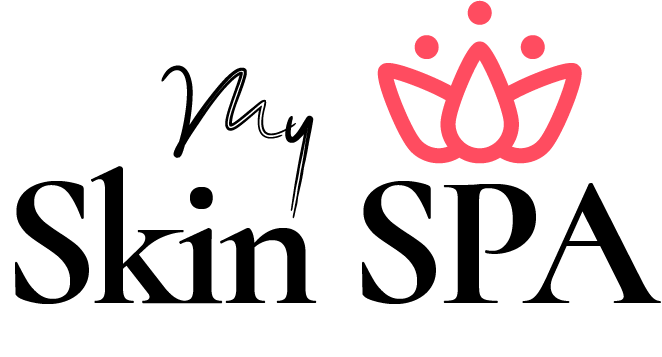Hi, tribe! I am thrilled to welcome my husband, Dr. Eddy, back to the show. It’s a long time since he was on, but I know that you love hearing from him!
Did you know April is Rosacea Awareness Month? You may have Rosacea or know someone with it. It’s a skin disorder that causes inflammation, redness and irritation.
And Dr. Eddy sees patients with Rosacea every day. It’s a very common skin condition. I wanted an entire episode to be dedicated to the symptoms and possible methods of treatment. Let’s get started!
What is Rosacea?
According to Dr. Eddy, Rosacea can cause redness and blushing on the face. This is most common around the cheeks, nose, and lips. Rosacea can manifest differently for each person — your Rosacea might be different from someone else’s.
Due to this, Rosacea can be confused with other skin disorders. Consult your dermatologist if in doubt.
You should consult your dermatologist if you suffer from Rosacea. Your skin is extremely sensitive and can be aggravated by certain topical products or even your diet.
What are the four subtypes of Rosacea, and what do they mean?
There are four types of Rosacea that you should be aware of.
Erythematotelangiectatic Rosacea
This type of Rosacea causes persistent redness on the face. This type of Rosacea is permanent if not treated.
Papulopustular Rosacea
Papulopustular Rosacea causes red, swollen bumps to appear on the cheeks. The whitehead bumps are often mistaken for acne.
Phymatous Rosacea
The skin is bumpy and swollen, usually around the nose. This is caused by inflammation, which causes excessive scar tissue. It is more common in men.
Ocular Rosacea
Ocular Rosacea is a condition that affects the eye, causing irritation or sensitivity. It can also cause cysts. Your eyes can look watery and red but feel dry and gritty.
Rosacea: What are the signs?
Let’s talk about some of the common symptoms of Rosacea now that we have covered the four types of Rosacea. If you experience any of these symptoms, consult your dermatologist to diagnose and treat the condition.
Trigger Based Flushing
Trigger-based flushing occurs when you are exposed to certain foods, environments, or emotional stresses.
Some people claim to flush more when they eat spicy food or drink red wine, even though these things didn’t bother them before. Some people claim to flush more during emotional stress or hormonal fluctuations.
If you’ve been experiencing trigger-based flushing recently, it may be a sign of erythematotelangiectatic Rosacea.
Textural changes on the skin
Bumps, rashes, and other abnormal skin conditions are examples of textural changes. Keep in mind, however, that acne is different from Rosacea. Clogged skin pores can cause acne, excessive production of oil, or bacterial infection. Papulopustular Rosacea is due to inflammation.
Consult your dermatologist if you are unsure whether the changes in your skin texture are caused by acne or Rosacea. We’ve been specially trained to diagnose and treat these symptoms.
Broken Capillaries
These tiny blood vessels are called capillaries, and they can sometimes pop. Some people refer to these broken blood vessels as “spider veins,” while the official term for them is “telangiectasias.” These can be symptoms of Rosacea.
You may have Rosacea if you see red patches on your face.
Watery, Gritty Eyes
You may have been rubbing or scratching your eyes constantly. No matter how you care for them, your eyes are always red. Are your eyes both watery and gritty?
This could be an indication of ocular Rosacea! When I work with a patient who suffers from ocular Rosacea, we often collaborate to make sure that the condition doesn’t lead to corneal abrasions and other long-term effects.
You can help ease the symptoms of Rosacea by modifying your lifestyle.
Use a Gentle Skincare Routine
Treat your skin as if it were baby skin if you suffer from Rosacea. Avoid any products that have a physical scrub, and use a gentle hydrating cleanser. Also, avoid using homemade soaps.
Peel Your Skin With A Beta Hydroxy Acid Chemical Peel
Beta-hydroxy acids are less irritating to the skin and help minimize large pores, which often accompany the textural changes in the skin caused by Rosacea. I would recommend choosing a peel that contains salicylic.
Test a small area of skin before applying the peel.
Moisturize Your Skin
Moisturization, regardless of your skin type or condition, is essential. For rosacea-prone skin, moisturizing every day is even more critical.
It would be best if you looked for moisturizers containing ceramides, glycerin, and hyaluronic acids. These humectants are great at attracting moisture into your skin from the surrounding environment.
Limit sun exposure by applying sunscreen every day and using daily sunscreen.
It is important always to wear sunscreen and limit exposure to UV rays during the summer months.
I love the EltaMD Ultra Clear Sunscreen. It is easy to blend with any skincare routine and has a special ingredient called Niacinamide that helps reduce inflammation.





